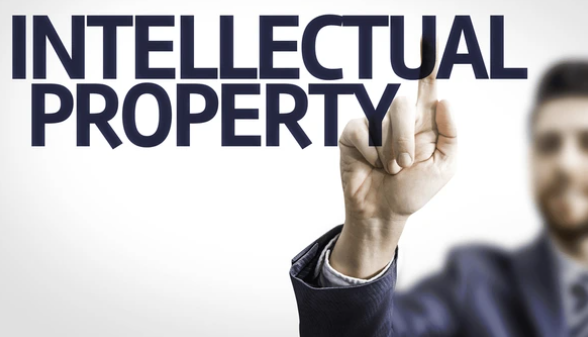The intellectual property (IP) licensing has gone a long way with the pace of technology…
IPR In Development Of Software Technology And Industry
Intellectual property rights provide for the foundation of the software industry. The law offers different methods for shielding rights of ownership based on their type. There are essentially four kinds of property rights relevant to software: patents, copyrights, trade secrets and trademarks. Each affords a distinct form of legal protection. Patents, copyrights and trade secrets help protect the technology itself. Trademarks protect the names or symbols used to distinguish a product within the marketplace.
Ownership and Value of Intellectual Property to Indian Software Developers[i]
It was within the past that Indian organizations created IP as an element of a customized software development contract with a distant customer. It had been a one-off engagement to meet the real needs of the client. This had two implications for the Indian software supplier. Firstly, the software that the Indian company created was the possessions of the client for whom it had been made and who bought it. It didn’t belong to the Indian vendor and in principle couldn’t be used again inconsiderately being given to the primary client. Therefore, the software services, whether or not valuable to the client, weren’t of much future business use to the Indian company. Second, the customized software was unique to the business application for which it was created and thus didn’t have much value in other business applications. It didn’t have value for other clients and thus it had been not of much future business value to the Indian software supplier.
Intellectual Property Protection for Software Innovation in software products is often protected as intellectual property, usually either through the utilization of copyrights or patents. Both patents and copyrights are tools that are intended to shield a firm’s or individual’s innovation from misuse by others, although they’re quite different tools for doing so. Copyrights, generally, protect the countenance of an idea; copyright protection extends to a particular work, but can’t be applied to the ideas contained in such work. The applying of copyright protection for software products was firmly established internationally via the World Trade Organization’s (WTO) Agreement on Trade-Related Aspects of Intellectual Property Rights (TRIPs). Under Article 10 of the TRIPs agreement, WTO members are required to treat computer programs, whether an object or in source code, as literary works as defined within the Berne Convention. Copyright protection thus extends routinely to software code once the code has been written and recorded during a medium. A copyright holder may use his or her right to stop others from using, making, selling, or distributing unauthorized copies of the work.
Unlike within the context of copyright, the TRIPs agreement doesn’t explicitly discuss patent protection for software. [i]The TRIPs agreement does, however, contemplate protection for software under its general discussion of patentable subject matter in Article 27. Article 27 makes patent protection available to any inventions altogether in fields of technology, provided they meet the minimum threshold requirements of novelty, utility, and non-obviousness. Like copyright, a patent holder may use his or her right to stop others from using, making, selling, or distributing unauthorized copies of the invention protected. The protection offered by patents tends to be broader than that of copyright, as copyright protection extends only to a particular expression whereas patent protection extends to the underlying functionality of an invention.
Because patents can offer broader protection than copyrights, they’re seen as more valuable if they can be acquired. However, patent protection tends to be costlier to induce than copyright protection, because patents require a proper application process in every country where protection is desired. This application process often involves not only application fees, but attorney and translation fees as well. In practice, the extent to which software may be patented varies by country, depending upon the formal requirements and limitations placed on the patenting of software by individual countries. The 1981 Supreme Court decision in “Diehr” is widely regarded as the seminal case on the patentability of software in the United States. In Diehr, the Supreme Court reaffirmed the long-held concept a mathematical formula or algorithm, in the abstract, isn’t patentable subject matter. The Supreme Court went on to hold in Diehr, however, that when a formula or algorithm is employed in a claimed invention, one must view the invention as a whole to work out patentability and not summarily dismiss the invention as non-patentable just because a formula or algorithm (i.e., software) was used. In other words, an invention that includes software may be protected via the patent laws, provided the invention, as a whole, meets the standards of patentability.
Protection of Intellectual Property in India (In the context of Software’s)
The security of intellectual property was of little enthusiasm to Indian software companies inside the past. To some extent this absence of intrigue in clarified by the small “new knowledge” content of Indian software services; there wasn’t a lot of property to monitor. Indian companies didn’t own the customized intellectual property they could have created since their work product fell under work for hire standards or ownership was explicitly transferred to the hiring company. Be that as it may, regardless of whether Indian companies created software services that had new knowledge value, they didn’t genuinely find a way to protect it. The main intellectual property protection available for software in India is copyright protection. India’s copyright law conforms to the requirements set out by the TRIPs agreement and thus software is protected as a literary work in India. Over the last ten years, India has implemented several legislative measures to bring it into compliance with TRIPs requirements.
Author: Shivani Mathur a BBALLB(H) student of Amity University, intern at Khurana & Khurana, Advocates and IP Attorneys. In case of any queries please contact/write back to us at arindam@khuranaandkhurana.com.
References:
[i]http://iipi.org/wp-content/uploads/2012/10/India-Software-Study-2004.pdf



